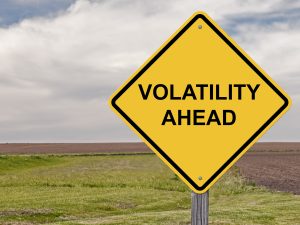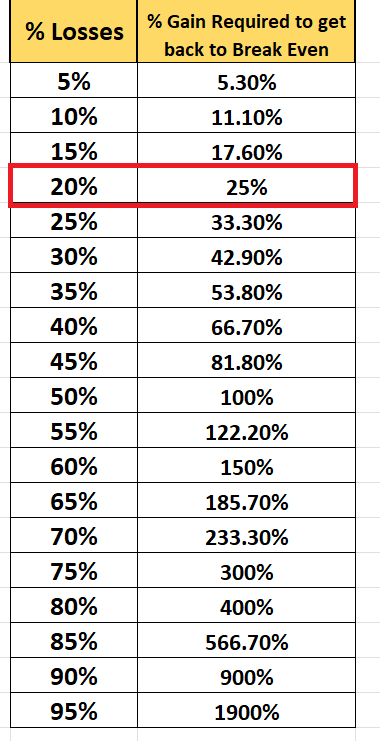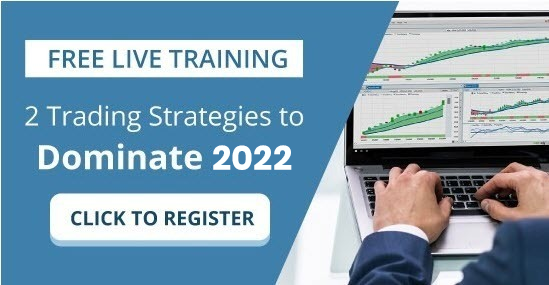
What is the purpose of trading? Your answer to that question will determine how you approach this activity of trying to grow your portfolio. You may think the answer is obvious, my objective in this article is to challenge your conclusions over that very simple question.
I have asked this question thousands of times to traders and rarely do I get the correct answer. The answers that I most often hear are:
- Make money
- Retire Early
- Grow my account
- Earn a profit
- Find great opportunities
While those are all worthwhile results, they are not the purpose of trading.
The very foundation of everything related to trading is to learn how to SURVIVE. This objective is so basic that it is often overlooked even by professional traders. When you learn the essence of survival you can accomplish any other objective that you aspire to. But if you overlook this basic tenet of trading, you will eventually do counterproductive things in your trading account and succumb to greed, temptation, and unnecessary risk. When you place SURVIVAL first you are assuring that you will live to trade another day and another trend.
I don’t know your trading style. I don’t know whether you’re conservative or aggressive. But I’m going to make a statement based upon my observations of thousands of traders. My strong suspicion is that you are trading too big.
Let me explain.
Everybody wants to make money. They are so hungry to quickly increase the size of their trading accounts that they bypass the most important ingredient to trading success. Money management.
To use an analogy from football, the offensive component of trading is trade selection. It’s how you put points on the board. The defensive component of trading is money management. It’s how you make sure you stay in the game by deciding how small you are going to trade. You need to have a strong offense and strong defense if you plan to win. One of the most important realizations traders have is that they come to recognize will make more when they trade smaller. Less is More.
Money management is as important as the hard work that went into earning the money to begin with. You must focus on your defense so that you do not have to start from nothing and earn it all over again.
For purposes of discussion, assume Trader A has a $10,000 trading account and enjoys trading Apple $AAPL. What most traders do is they look at the price of $APPL, (currently around $144) and they divide the size of their account ($10,000) by the current price and feel that’s the size they should trade.
This trader discovers they can trade 69 shares of $AAPL. To make matters worse, most brokerage companies will tempt traders with margin loans, allowing them to double the size of their account by borrowing money from the brokerage company. So, with margin the trader could trade as many as 138 shares of $AAPL.
I refer to this style of trading as living by the sword and dying by the sword. They are completely focused on the offensive component of trading. But where is the defense? They think stop placement is the best and only defense. It’s only after getting wrecked they begin to appreciate that leverage is a two-edged sword.
This trader is trading completely against the principles of good money management. They’re committing the entirety of their account and undertaking far too much risk. Their focus in on making money and they have overlooked all ideas associated with Risk and SURVIVAL.
How wrong can TRADER A be and still survive? Let’s define survival as a 20% drawdown.
A 20% drawdown is only $2,000 in this instance, but as you ponder this percentage recognize that the TOP Wall Street Money Managers average less than 20% per year returns. As the following table illustrates, it is exponentially more difficult to recover losses the bigger they are. When a trader loses 20% of their account value, they need to make 25% on future trades to get back to break even. That recovery process can take an exceptionally long time.
I share the following table with you in the hopes that it inspires you to recognize how important it is to keep losses small. Observe how challenging it is to get back to breakeven when losses increase. This is by far the biggest mistake that traders make. Trader A is so focused on making money that they trade BIG and ignore risk.
Eventually, this will hurt them.

Are you familiar with the South Korean Archery Team? They are known internationally as being the best in the world for archery. They consistently win the gold medal. What I found interesting was that the foundation of their training protocol is that they spend the first three months just learning how to pull the bow back. Imagine that! The best shooters of arrows spend three months just isolating the primary motion and activity of how an arrow is projected towards its target. Talk about discipline!
This story is relevant to trading because all traders claim they want to make money. But the South Korean archery team is focusing and isolating the one key activity of how an arrow finds its target. I’m sure they are aware of all of the obstacles related to archery, but they are focused on what they can 100% control. Likewise. in trading, the one factor you can control 100% is trade size. Trade size is the most crucial factor towards long-term success in trading because it alone is calibrated to your trading account size. By controlling trade size, you inherently control risk and maximize returns.
If Trader A is trading 138 shares of $APPL they can only withstand a drawdown of 9% in the price of $APPL before they reach the 20% threshold. Since $AAPL has traded in the past 12 months in a 40% volatility range, there is plenty of opportunity for the destruction of a trading account due primarily to poor money management.
Over the past year, $AAPL has traded as high as $182 and as low as $122.
Over the past month $AAPL has traded as high as $171 and as low as $142.
Trader A could easily have wrecked their trading account by simply ignoring the most basic principle of trading survival. Trade Size.
Trader A can only afford to be wrong 14.6 points out of a 60-point annual trading range before they tap out.
Consider the alternative viewpoint of Trader B who completely focuses on SURVIVAL.
Airline pilots have a saying, “there are old pilots and there are bold pilots, but there are no old, bold pilots.” That idea should be applied to trading and money management. There are old traders and there are bold traders, but there are no old, bold traders. If you get to be old and you are still trading, you come to appreciate that risk management is everything.
Money management is remarkably like the pre-flight checklist routines that a pilot engages in to ensure the highest probability of safety. A good money manager will assume that the worst-case scenario will unfold on every trade they take to guarantee that they do not violate the basic principles of survival and money management.
What a good money manager will do when they look at $AAPL with identical resources to Trader A is they will ask:
What has been the Annual trading range of $AAPL?
What has been the monthly trading range of $AAPL?
What has been the Weekly trading range of $AAPL?
What is the current trend of $AAPL?
Can I grab 20% of that trend?
How little of my account do I want to commit to this activity?
If I am 100% wrong on this trade, how am I adversely affected. How much will my account contract in size?
The focus is not on how much they will make if they are right, but on how little they will lose if they are wrong.
They have a $10,000 trading account and are also trading $AAPL. But their focus lies not in greed or fear, but in managing the risk associated with trading $AAPL. The most effective way to manage risk is to manage trade size.
Let me elaborate.
Most textbooks on money management are very mathematical and quantitatively oriented.
I will try to summarize professional money management principles with the following analogy circling back to the South Korean Archery team.
Imagine that to master money management I only allow you to trade one share of $AAPL stock. Initially, that may sound completely counterproductive. However, what you quickly will understand is you’re forced to grow your account a certain percentage, and demonstrate skill, before you’re allowed to trade 2 shares of $AAPL stock. And so on, and so on until you are trading thousands of shares of $AAPL.
In other words, the basic requirement is that before you can trade larger you must grow your account. Should your account fall in size due to trading losses, you are automatically forced into a smaller trade size that is calibrated to your account size to limit and minimize risk.
That, at its essence, is what money management is. If trade size is too small a trader will never make any significant gain. However, if trade size is too large one disproportionate loss can destroy a trading account. There are numerous theories and ideas related to money management and trading. The guiding principle of all solid money management is to assume the “risk of ruin” on each and every trade that is taken. Risk of ruin is the probability that an individual will consistently lose—to the point where it is no longer possible to recover the losses or continue. By placing an extreme focus on defense and capital protection you are trading
smaller which allows your account to compound gains over the longer term much faster. It is completely counterintuitive.
All money managers know they have limited resources. Instead of just focusing on the direction of the market they are constantly calibrating the size of each trade to the size of their portfolio. If the worst happens, they will still survive to trade another trend.
This is not exciting. But it is trading with the long-term probabilities on your side and the wind at your back.
So, if Trader B loved $AAPL at $172 with his $10,000 trading account, before taking the trade they would be asking themselves, “Well, I don’t want to lose more than 2% on this trade. How many shares should I trade if I place my stop at $144?”
Answer 2% of 10,000 is $200. If $AAPL were to fall from $171 to $144 the loss would be $27 per share. 7 shares of $AAPL would create a loss of $189 which would be slightly less than the 2% risk threshold that is desired.
When most traders learn about money management the first thought that enters their mind is that they will never make any money by learning to trade smaller. I would challenge you to think of it from the “risk of ruin” perspective.
Over the past few months, we have seen the tech sector get decimated. Facebook and Apple are down over 40% from their highs. I know very few traders who have ever recovered from a 40%+ drawdown.
Those who practice good money management can sustain the growth in their accounts in even the worst of trading environments.
The key principle is never how much money you make when you are right, but how little you lose when you are wrong.
Be risk intelligent, not risk-averse because volatility happens.
We live in interesting times. The markets are wild. Speculative fervor is hot. Everybody is entitled to their opinion, but if you’re paying attention, you’ll quickly come to realize that most people’s opinions are wrong.
That is the minefield that every trader has to navigate through.
The basics are regularly overlooked by inexperienced traders when they hear a story about a company that has all the elements of the next superstock.
It is sad, and unnecessary in today’s day and age of machine learning and artificial intelligence.
A stock may have an alluring story.
A stock may have a very effective management team.
A stock may have incredible earnings.
A stock may have infrastructure, partnerships, uniqueness, etc.,
But if these elements are not reflected in price you are focused on what “SHOULD” occur in the market.
And the word “SHOULD” is responsible for more losses in trading than any other. SHOULD is the most harmful word in a trader’s vocabulary.
Bad Traders Obsess on the SHOULD.
But when “SHOULD” and “IS” meet, some pretty explosive things can happen and that is exactly where we want to be as traders!
That is why artificial intelligence for traders is so indispensable.
Mistakes are financially costly but for machine learning, it is the pathway to mastery and excellence. The real education in trading always lies in learning from the losers.
Most humans have a really hard time learning from bad experiences. The ego gets in the way, each and every time.
We discuss many of these types of tactics in our “Learn to Trade with A.I.” Master Class webinars and I’d like to extend an invitation for you to attend.
Markets Go Up.
Markets Go Down.
Markets Trade Sideways.
Price is the only thing that matters when we are trading. It is what can make you wealthy or decimate your account. Everything else is just noise.
Are you capable of finding those markets with the best risk/reward ratios out of the thousands of trading opportunities that exist?
Knowledge.
Useful knowledge.
And its application is what A.I. delivers.
Isn’t that what we all want from the markets? Consistency.
So, imagine what might your portfolio would look like today had you applied artificial intelligence to it five years ago.
See for yourself how a machine-based learning software makes it easier to find statistically solid trends with less risk.
Most traditional indicators that traders use today were developed in the 1970’s and 1980’s. They are incapable of telling you what the market is going to do moving forward.
Once again, machine outperforms humanoid.
Since artificial intelligence has beaten humans at Chess, Poker, Blackjack, Go and Jeopardy, why do we think that trading would be any different?
It’s important that you find out more and discover why artificial intelligence keeps traders on the right side of the trend at the right time.
Join us for a FREE, Live Training.
We’ll show you at least three stocks that have been identified by the A.I. that are poised for big movement… and remember, movement of any kind is an opportunity!
Discover why artificial intelligence is the solution professional traders go-to for less risk, more rewards, and guaranteed peace of mind.
Visit with us and check out the A.I. at our Next Live Training.
It’s not magic. It’s machine learning.
Make it count.
IMPORTANT NOTICE!
THERE IS SUBSTANTIAL RISK OF LOSS ASSOCIATED WITH TRADING. ONLY RISK CAPITAL SHOULD BE USED TO TRADE. TRADING STOCKS, FUTURES, OPTIONS, FOREX, AND ETFs IS NOT SUITABLE FOR EVERYONE.
DISCLAIMER: STOCKS, FUTURES, OPTIONS, ETFs AND CURRENCY TRADING ALL HAVE LARGE POTENTIAL REWARDS, BUT THEY ALSO HAVE LARGE POTENTIAL RISK. YOU MUST BE AWARE OF THE RISKS AND BE WILLING TO ACCEPT THEM IN ORDER TO INVEST IN THESE MARKETS. DON’T TRADE WITH MONEY YOU CAN’T AFFORD TO LOSE. THIS ARTICLE AND WEBSITE IS NEITHER A SOLICITATION NOR AN OFFER TO BUY/SELL FUTURES, OPTIONS, STOCKS, OR CURRENCIES. NO REPRESENTATION IS BEING MADE THAT ANY ACCOUNT WILL OR IS LIKELY TO ACHIEVE PROFITS OR LOSSES SIMILAR TO THOSE DISCUSSED ON THIS ARTICLE OR WEBSITE. THE PAST PERFORMANCE OF ANY TRADING SYSTEM OR METHODOLOGY IS NOT NECESSARILY INDICATIVE OF FUTURE RESULTS. CFTC RULE 4.41 – HYPOTHETICAL OR SIMULATED PERFORMANCE RESULTS HAVE CERTAIN LIMITATIONS. UNLIKE AN ACTUAL PERFORMANCE RECORD, SIMULATED RESULTS DO NOT REPRESENT ACTUAL TRADING. ALSO, SINCE THE TRADES HAVE NOT BEEN EXECUTED, THE RESULTS MAY HAVE UNDER-OR-OVER COMPENSATED FOR THE IMPACT, IF ANY, OF CERTAIN MARKET FACTORS, SUCH AS LACK OF LIQUIDITY. SIMULATED TRADING PROGRAMS IN GENERAL ARE ALSO SUBJECT TO THE FACT THAT THEY ARE DESIGNED WITH THE BENEFIT OF HINDSIGHT. NO REPRESENTATION IS BEING MADE THAT ANY ACCOUNT WILL OR IS LIKELY TO ACHIEVE PROFIT OR LOSSES SIMILAR TO THOSE SHOWN.




